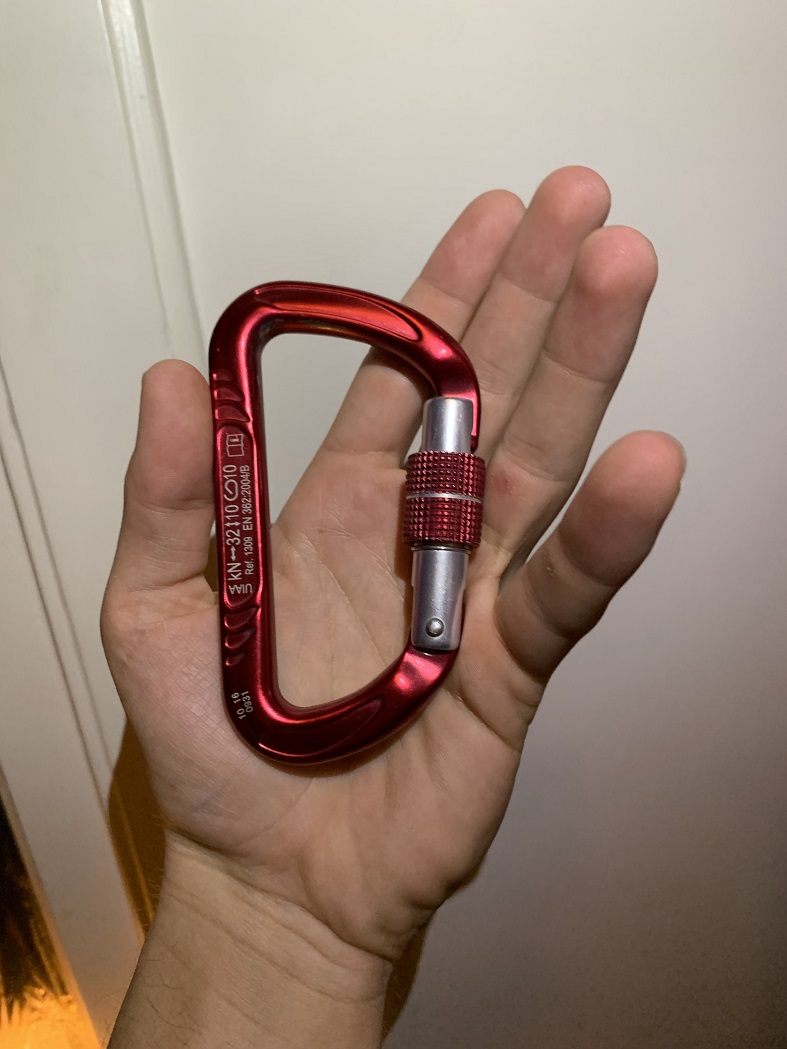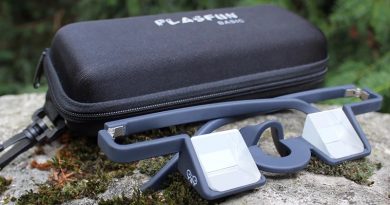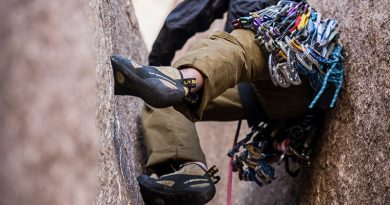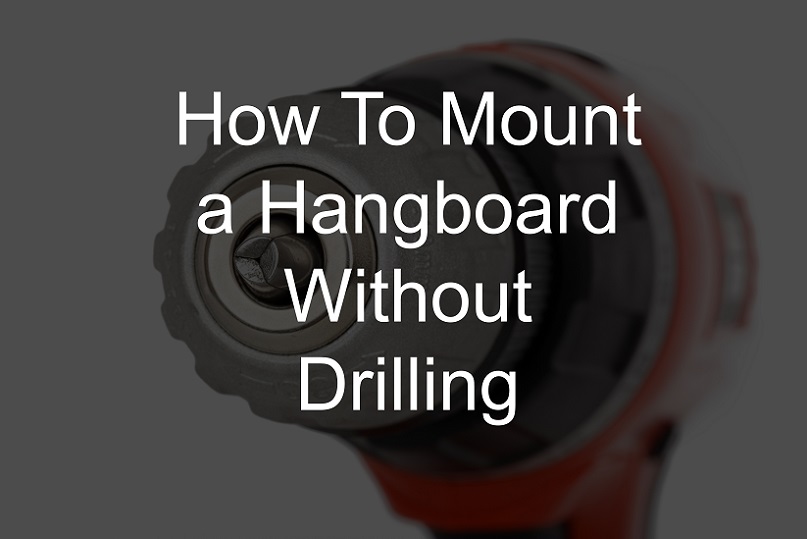Experienced rock climbers know: almost nothing can be less exciting than buying a new pair of climbing shoes.
At the very least: nothing can be worse than putting them on. If you’re new to rock climbing, you’ve likely heard horror stories about how climbing shoes fit. But are they really that uncomfortable? I’ve got some (somewhat depressing) answers for you.
In short, climbing shoes will likely never quite be comfortable. But does that mean they have to be the toe-crunching nightmare rock climbers have come to disdain?
Not necessarily.
Below, I’ll tell you how rock climbing shoes should really fit. In doing so, I promise to give you the truth, the whole truth, and nothing but the truth.
Keep the following information in mind as you select your next climbing shoes.

Should Climbing Shoes Be Uncomfortable for Beginners?
I want to start with the exception to the rules. As is always the case, for some people, some of the tips in this article just don’t apply yet. And, in this case, I’m talking about beginners.
In this way, beginning rock climbers boast one great advantage over their more experienced counterparts. If you’re just hitting the rocks, you probably have a good amount of time before you have to experience the nightmare of real climbing shoes.
But for those who wish to improve their skills, trust me: your time is coming. Enjoy being exempt from these rules while you can.
For now, just remember that climbers typically recommend that beginners wear comfortable shoes. Though tighter-fitting shoes provide greater control over your climb, you don’t need this added mobility yet.
Not only that, those who aren’t used to climbing shoes may find them too distracting. Before you have a solid grasp on technique, you don’t need anything else clouding your mind. By wearing comfortable shoes, you can stay better focused on the task at hand.
But if you’re a beginner thinking of hitting the back button, stop right there. Just because some of the later information doesn’t yet apply to you doesn’t mean you shouldn’t read it. By having an understanding of what lies ahead, you can better select your rock climbing shoes later. You don’t have to understand it all now—simply allow the information to marinate until it’s time to pick out your new rock climbing shoes.
So what are some things you should know about how rock climbing shoes should fit? Let’s take a look below.
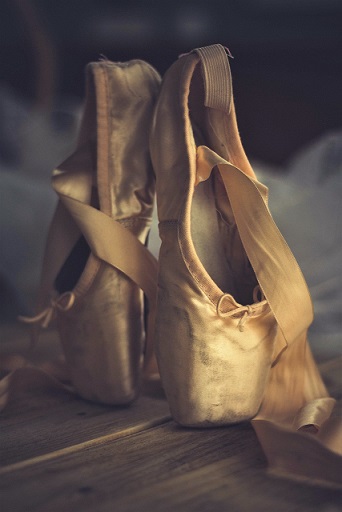
Rock climbing shoes sometimes make your feet feel as if they’re in the middle of a highly technical ballet performance. In other words – they hurt!
1. Should My Rock Climbing Shoes Hurt?
Many climbers balk at the notion that their shoes should hurt. Despite this, however, this traditional wisdom still holds weight among many rock climbers.
But is it true?
To a certain degree, yes.
The uncomfortable truth is simply that rock climbing shoes aren’t made for your comfort. At least, companies don’t place as much value on comfort as they do on you getting the proper fit.
But what does “proper fit” even mean?
For many climbers, it means having their toes die slow death by strangulation as the blood slowly drains from their tightly-compressed feet.
Okay, I know—it’s not quite that bad. But it can definitely feel like it at times, especially when you’re first breaking in a pair of climbing shoes.
If this sounds off-putting, don’t worry. I have some good news for those who find it hard to accept that they’ll have to give up that amount of comfort. You don’t.
While it may be true that you want your shoes to be form-fitting, this doesn’t mean that they should squish your feet. Instead, you want them to fit snugly.
Remember, rock climbing shoes tend to mimic your feet and give your toes that all-important crimp. By doing so, they allow climbers to better feel the rocks while climbing.
You can’t do this with feet that are going numb from a lack of circulation. If you’re experiencing problems with your feet, you can be quite sure that your shoes are simply too tight. Make sure that you’re not grabbing a loose pair of shoes—those of the rock climbing variety will always be a little uncomfortable. However, don’t waste your time wearing shoes that are so tight that it’s hard to move.
It simply defeats the purpose.
2. How Do I know When My Climbing Shoe Size Is Right?
With that in mind, it may sound difficult to find the right climbing shoe. Don’t worry, though, it’s still a simple and straightforward process.
Typically speaking, you’ll know that you have the right size when there are no air pockets between your toes. This will allow you to get a crimp while keeping you from having potentially-dangerous levels of compression.
Keep in mind that for new climbers, this usually feels as if they are wearing shoes a size too small. Also, remember that the operative word in all this is “snug.”
You don’t want your toes to have any wiggle room, but that doesn’t mean that they should be compressed, either. By striking the right balance between the two, you can maximize both the utility and the comfort of your next pair of climbing shoes.
3. How Should Shoes Fit at My Heel?
When talking about climbing shoes, many tend to focus on how they should feel at the toes. In doing so, they inadvertently look over how these shoes should feel around the rest of your feet—namely your heel.
But don’t worry—there’s nothing really new to learn here. As with your toes, you want a snug fit that doesn’t leave any breathing room between your heel and the sides of the shoe. By having a tight fit, you’ll enjoy a climbing shoe that’s best suited for your feet.
Be careful again to not go too small. You don’t want your shoes digging into your flesh or pressing your tendons in. Remember: you don’t want to sacrifice your health for tight-fitting shoes. You simply want to sacrifice your comfort. There’s a big difference.
4. Is Wearing Too Small a Shoe Dangerous?
Similarly, you may find climbers who focus a little too much on the dangers of wearing oversized shoes.
“You can’t get the right footing,” they say, while emphasizing that you won’t be able to secure your position that well.
Now, don’t get me wrong. I’m not saying that they’re lying. What they’re saying often proves to be true on the rocks—so you definitely don’t want to get shoes that are too big.
That being said, however, many tend to live by notions that it’s okay if you choose shoes that are slightly too small. You can live through cramped feet, they say without realizing that it could pose more serious issues than that.
Namely, overly compressing your feet may lead to a number of serious problems. Therefore, you need to make sure that you’re wearing shoes that are snug, not overbearing. Some of these problems may include nerve damage and increased bacteria or fungi growth.
Even worse, you may find the shoes to be so unbearable that they cost you your positioning. If you’re attempting to secure a small hold, for instance, you may find the pain excruciating. In such cases, many climbers tend to move forward as quickly as possible, but this kind of rushing can pose safety risks. When climbing, you always need to be able to take time to plan your next move. If your shoes don’t allow you to do that, they’re not the right size.
5. Are There Different Sizes of Different Levels?
With that in mind, do also note that the size of your shoe will depend on your rock climbing level.
We’ve seen this to a certain degree already, but I mention it again because it’s worth noting that the distinction isn’t between beginning climbers and everyone else.
Instead, most climbers follow the notion that there are three common skill levels. As your ability increases, you’ll need to up your climbing shoes so that you can progress in the difficulty of your climbs.
So, what are these three levels? Let’s take a look below:
Neutral
Designed for beginners, neutral shoes offer the maximum comfort available for any rock climbing shoes. These options provide for better grip than regular sneakers, but they don’t offer the full functionality of more advanced climbing shoe options.
Namely, neutral shoes don’t provide quite as tight of a grip around the toes. In other words, those looking for the perfect crimp won’t find it here. These shoes provide a good bit of breathing room around the feet and the toes, making them perfect for beginners.
Experienced climbers may at times wish to invest in neutral shoes, too. These climbers typically climb multi-pitch or other long trad routes and need more comfort in their shoes. Keep this in mind as you’re on the rocks. While doing so, however, do remember that the sacrifice you make for comfort can often be your safety.
Moderate
Moderate shoes boast a tighter-fitting design. They often include a curved, pointed camber that helps position the foot correctly for climbing on the rocks.
More experienced climbers have likely already adapted to the fit of these moderate rock climbing shoes.
For beginners, however, they will prove highly uncomfortable at first. If you’ve found yourself in this position, all you can really do is wait for your feet to adapt.
Also, remember that even within this category, different levels of “snug” fits exist. Make sure that you find the one right for you—and consider going a little lax if you’ve got any long routes ahead of you.
Aggressive
Designed with the expert climber in mind, aggressive shoes boast superior fit and ultimately functionality.
But breaking these shoes in takes some time and experience. The most uncomfortable shoes of the bunch, aggressive climbing shoes allow experienced climbers to pull off a wider variety of stunts.
Those just starting out don’t yet need to have aggressive shoes on their radars. The type of stunts you’ll be able to do with aggressive shoes lie far beyond beginner level techniques.
The tradeoff is that aggressive shoes tend to be extremely snug—trust me: you’ll want literally zero breathing room.
6. How Does a Climbing Shoe’s Material Affect Its Fit?
Consider a shoe’s material when selecting your climbing shoe.
Certain types of materials offer different fits than others. You may notice, for instance, that your leather shoes may stretch over time and can get up to a ½ a size bigger. In these cases, you may want to buy ½ size lower than what you would typically wear—unless you plan to replace your shoes frequently.
While synthetic shoe types don’t do this, they will start forming to your feet over time. This can provide even better feel while you’re on the rocks.
7. Should I Wear Socks with My Climbing Shoes?
Typically speaking, no.
You’ll want to buy a pair of shoes that fit snugly without having to wear socks. Beginners have a bit more leeway in this regard, but for the most part, when we talk about sizing and snug fits, we’re talking about feet without any socks on.
To be a little bit more comfortable, it’s okay to wear thin socks during regular training session.
Keep these tips in mind as you select your next pair of climbing shoes. Though they may not always be comfortable, you can strike a balance between comfort and utility. In doing so, you can make the most out of your next climb.

